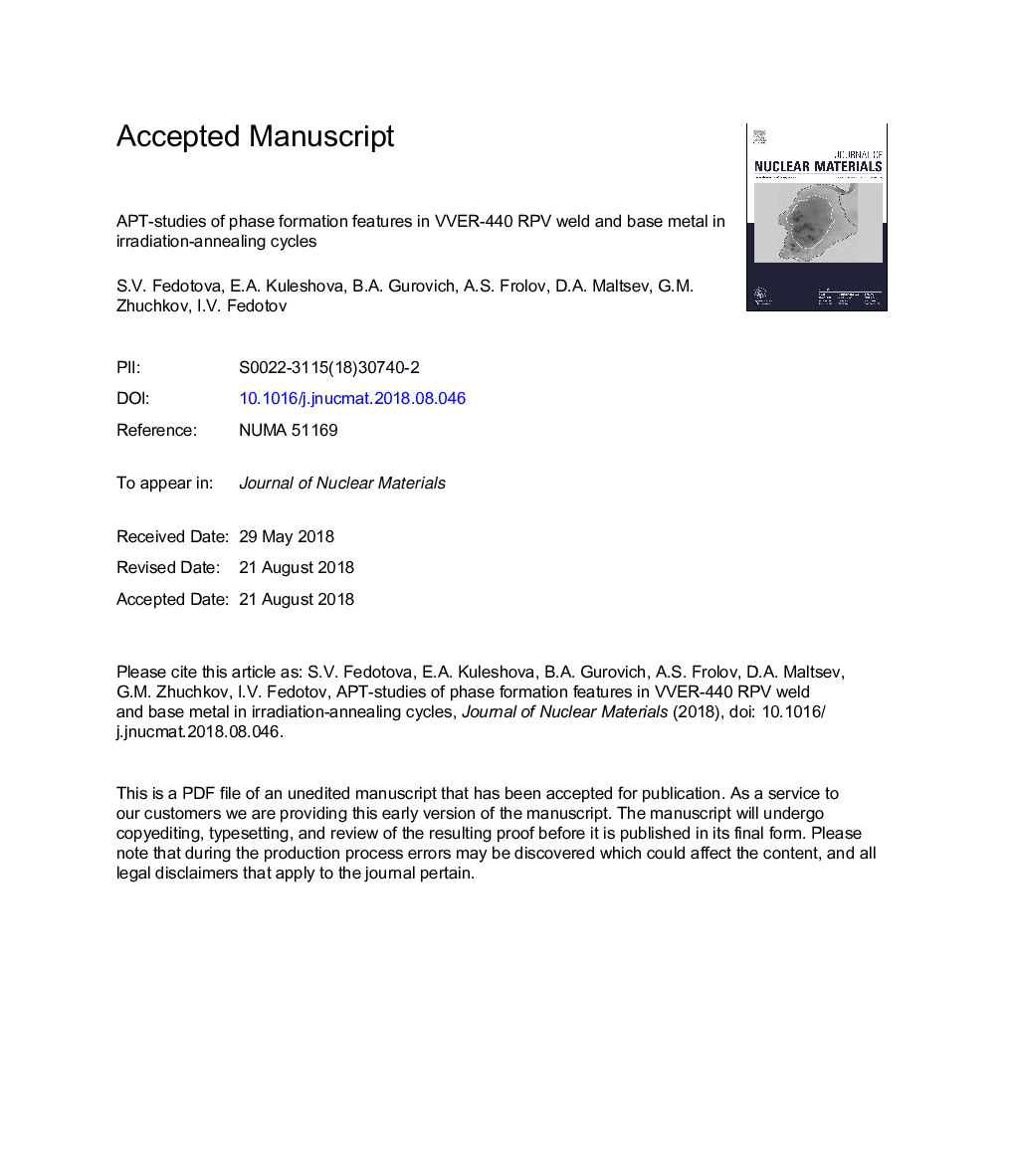| Article ID | Journal | Published Year | Pages | File Type |
|---|---|---|---|---|
| 8961442 | Journal of Nuclear Materials | 2018 | 38 Pages |
Abstract
It is shown that primary and re-irradiation is accompanied by formation of radiation-induced Cu-P-based precipitates whereas recovery annealing leads to their partial dissolution and coarsening of the undissolved ones. At this, for both WM and BM under primary annealing, Cu dissolves in the matrix, while under re-annealing Cu almost doesn't return to the matrix. In WM P fully dissolves in the matrix under annealing while in BM there is gradual matrix P depletion under operation (including recovery annealing) due to formation of P grain boundary segregation. Under the third irradiation cycle, Cu almost doesn't contribute to precipitation: in WM radiation-induced precipitates are P-based, enriched with Si, Ni and Mn, while in BM there are Si-based precipitates, enriched with Ni and Mn. In BM number density of precipitates is lower than in WM during all operation stages that causes its lower radiation embrittlement.
Keywords
Related Topics
Physical Sciences and Engineering
Energy
Nuclear Energy and Engineering
Authors
S.V. Fedotova, E.A. Kuleshova, B.A. Gurovich, A.S. Frolov, D.A. Maltsev, G.M. Zhuchkov, I.V. Fedotov,
